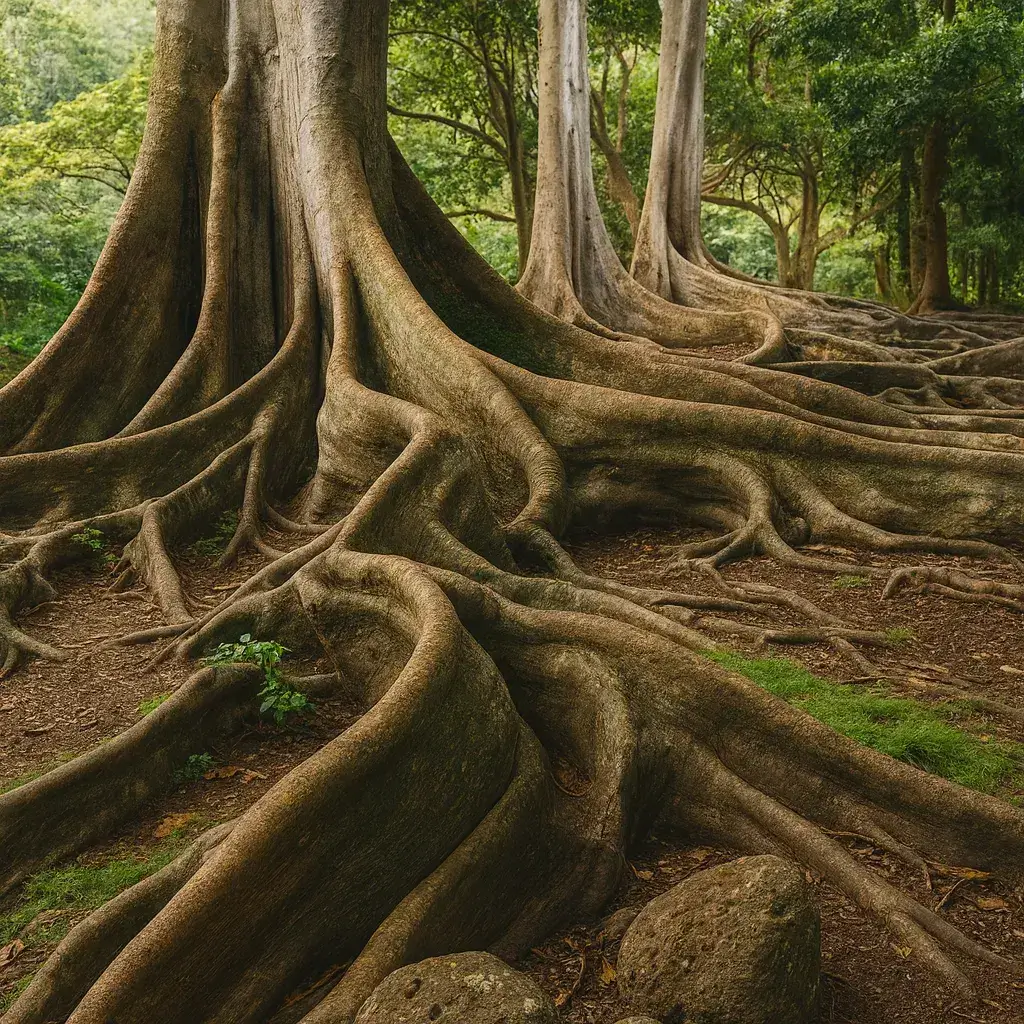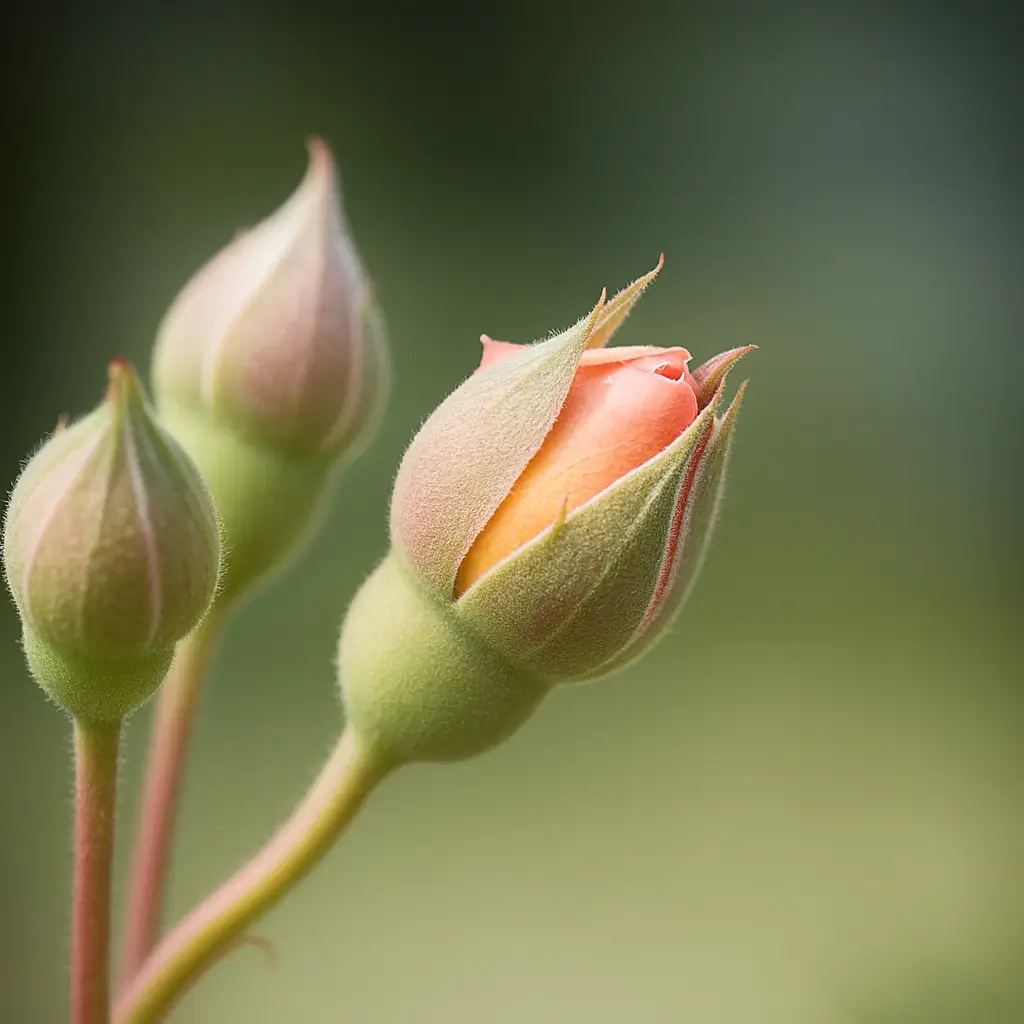When most people think of healing, they think of fixing symptoms. Headache? Take a pill. Anxiety? Learn a coping trick. Digestion off? Adjust the diet. That approach can help in the moment, but it doesn’t touch the deeper patterns that keep repeating underneath.
The Daoist healing arts offer another way. They aren’t just about “fixing” problems. They’re about restoring balance, reconnecting to the flow of life, and learning how to live in harmony with yourself and with nature. They give us a foundation for healing that isn’t limited to symptom management—it’s about transformation.
For survivors of childhood complex trauma, this shift matters. Trauma doesn’t just create symptoms; it distorts how we relate to ourselves, to others, to time, to the natural world. The foundations of Daoist healing arts help reorient us. They remind us that healing isn’t about force—it’s about finding balance again, from the inside out.
Root vs. Branch
One of the most important principles in Daoist medicine is the difference between root and branch.
- The branch is the symptom: the anxiety attack, the fatigue, the digestive upset.
- The root is the deeper imbalance driving it: disrupted qi, unresolved grief, fear lodged in the Kidneys, disconnection from cycles of rest and renewal.
Modern culture often treats only the branch. Daoist healing insists we must also look at the root. That doesn’t mean ignoring symptoms. It means treating them while also addressing the deeper causes.
For trauma survivors, this distinction is powerful. Your symptoms aren’t random. They are branches growing from roots that reach back into childhood. Healing isn’t about chopping off the branches—it’s about tending to the roots so new growth can happen.
Wholeness and Balance
Another foundation is wholeness. Daoist thought doesn’t split mind from body, or body from spirit. They are all expressions of qi, life force in different forms. If one is disrupted, the others feel it.
Balance is not about perfection. It’s about dynamic harmony. Yin and yang are always shifting—rest and activity, inner and outer, stillness and movement. Trauma often throws people into extremes—either shut down and numb, or overwhelmed and chaotic. The healing arts are designed to restore movement between those poles, so life can flow again.
Inner and Outer Healing
Daoist healing also recognizes two layers of work: inner and outer.
- Outer healing includes herbs, acupuncture, bodywork—things done to the body.
- Inner healing includes meditation, qigong, nutrition, self-reflection—things we can practice ourselves.
For trauma recovery, inner healing is essential. Outer treatments can help, but lasting change comes when you learn to work with your own energy, awareness, and habits. That’s where the four internal disciplines—contemplation, movement, nutrition, cyclical studies—become central.
Nature as Guide
At the core of Daoist healing is alignment with nature. The body is seen as part of the same cycles as rivers, seasons, and stars. Trauma disconnects us from those rhythms. We lose touch with the body’s signals, with rest, with natural flow.
Returning to nature doesn’t have to mean living in the woods. It can be as simple as eating with the seasons, noticing the shift of day to night, or aligning your practices with the organ clock. These small alignments remind the body it is part of something larger. That sense of belonging—to nature, to time, to life—is deeply regulating for survivors who grew up feeling rootless or unsafe.
How These Foundations Support Trauma Recovery
Childhood complex trauma disrupts safety, belonging, and connection. The Daoist foundations restore them piece by piece.
- Root vs. Branch reminds you to look deeper—your struggles make sense, and they have causes.
- Wholeness and Balance reconnects body, mind, and spirit, so healing isn’t fragmented.
- Inner and Outer Healing gives you tools to take agency, not just rely on others.
- Nature as Guide reconnects you to rhythms larger than trauma, bringing perspective and steadiness.
These foundations don’t erase the past. They create a container for transformation.
What This Section Covers
In this part of the site, we’ll unpack the building blocks of Daoist healing: philosophy, root and branch, wholeness, balance, inner and outer healing, connection with nature. Each post will explore one piece in more detail, showing how these ancient ideas apply directly to modern trauma recovery.
The point isn’t to become a Daoist scholar. The point is to take what resonates and begin weaving it into your own life.
Starting From the Ground
Think of these foundations as soil. Without healthy soil, seeds won’t grow. Without a clear foundation, practices won’t stick.
By understanding the roots of Daoist healing, you set yourself up for the practical work that follows—the disciplines, the organ systems, the daily practices. Without this foundation, it’s easy to treat practices like techniques to “fix” yourself. With the foundation, you begin to see them as ways of cultivating balance, wholeness, and resilience.
A Different Way of Seeing
The Daoist healing arts don’t offer a single cure. They offer a different way of seeing yourself and your life. They teach you to look for patterns instead of problems, balance instead of perfection, alignment instead of control.
For survivors of childhood trauma, that reframe is everything. It shifts the question from, “How do I fix what’s broken in me?” to “How do I restore balance and reconnect with what was always there?”
That’s the heart of these foundations. Not fixing. Reconnecting. Not force. Flow.


